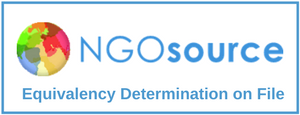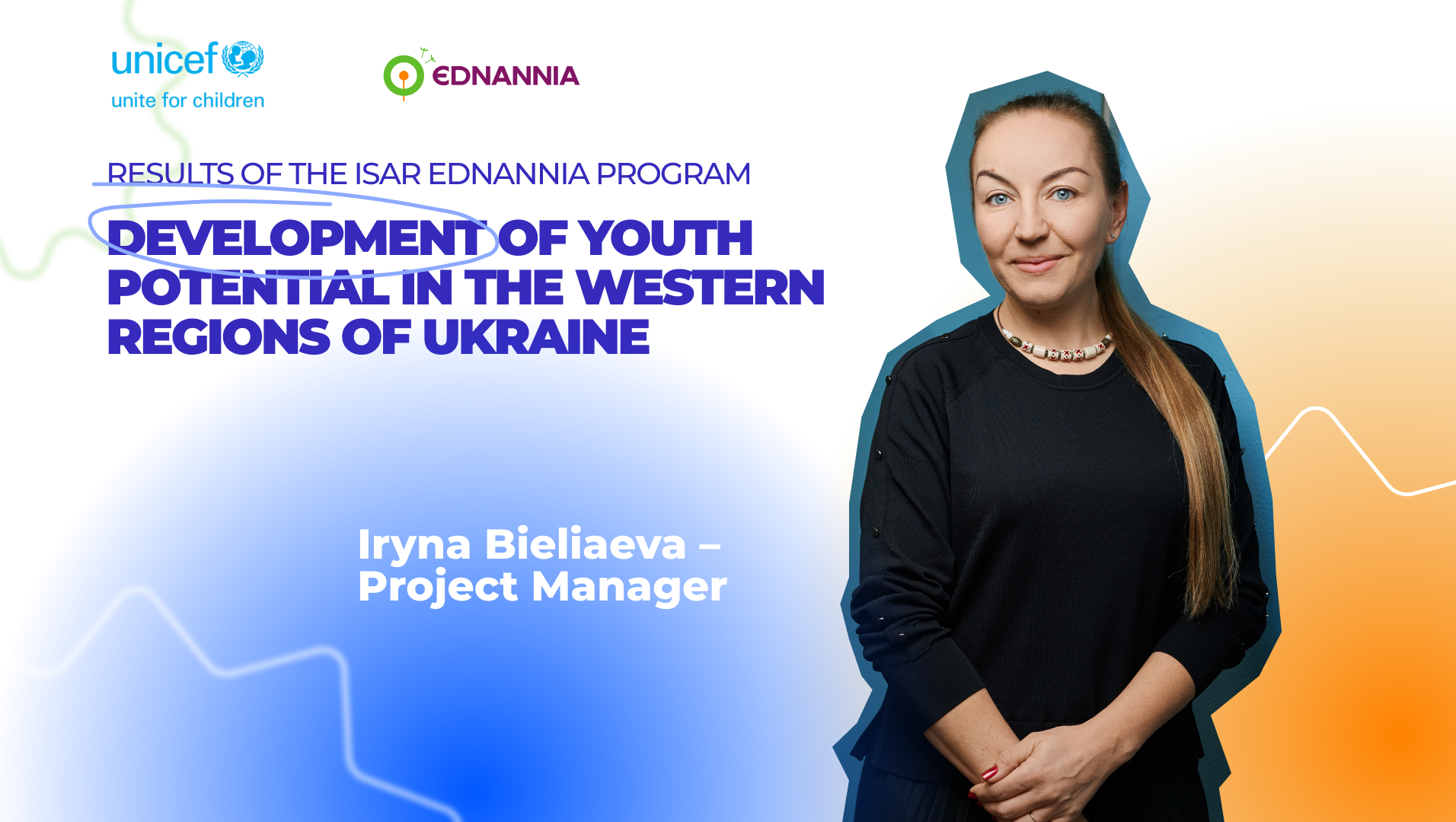
The Youth Capacity Development in Western Regions of Ukraine Program, implemented by ISAR Ednannia in partnership with UNICEF Ukraine and with support from the Governments of Japan, Norway, and Germany, spanned seven oblasts, brought together 11 partner organizations, and engaged thousands of young people.
How was such a large-scale initiative brought to life — one that leaves a lasting impact, from new youth centers to inclusive opportunities for self-realization? We spoke with the Program’s manager, Iryna Bieliaeva, about the challenges, lessons, and key achievements.
– What do you consider the Program’s most significant achievement?
– Iryna Bieliayeva: It brought together 11 implementing partners from civil society organizations and had five separate areas of work, each carried out independently. So, the greatest achievement was organizing such a complex mechanism – launching, supporting, and achieving (or even surpassing) the results and indicators expected by the donor.
– Was there a particular result or story that stood out to you?
– If I had to highlight a specific area, I would mention the youth centers — ten of them were created from scratch. That’s a story that can truly be called a story of future success.
– The Program covered seven oblasts of Ukraine. What was unique about your approach in each area? Did the needs of young people differ?
– Certain core needs are common to all youth. We entered areas where people had never even heard of youth councils or youth centers — and we were prepared for that. I wouldn’t say that the needs themselves were fundamentally different, but each oblast had its specifics. For example, we worked in Zakarpattia, including with Roma communities, and we successfully engaged Roma youth — within the UPSHIFT component, we supported two Roma organizations. That was a unique, interesting, and valuable experience.
What I can say is that young people across Ukraine want the same things — and the way to work with them should probably follow the same principles: giving them a chance to express themselves and designing projects in a way that listens to their needs right from the start.
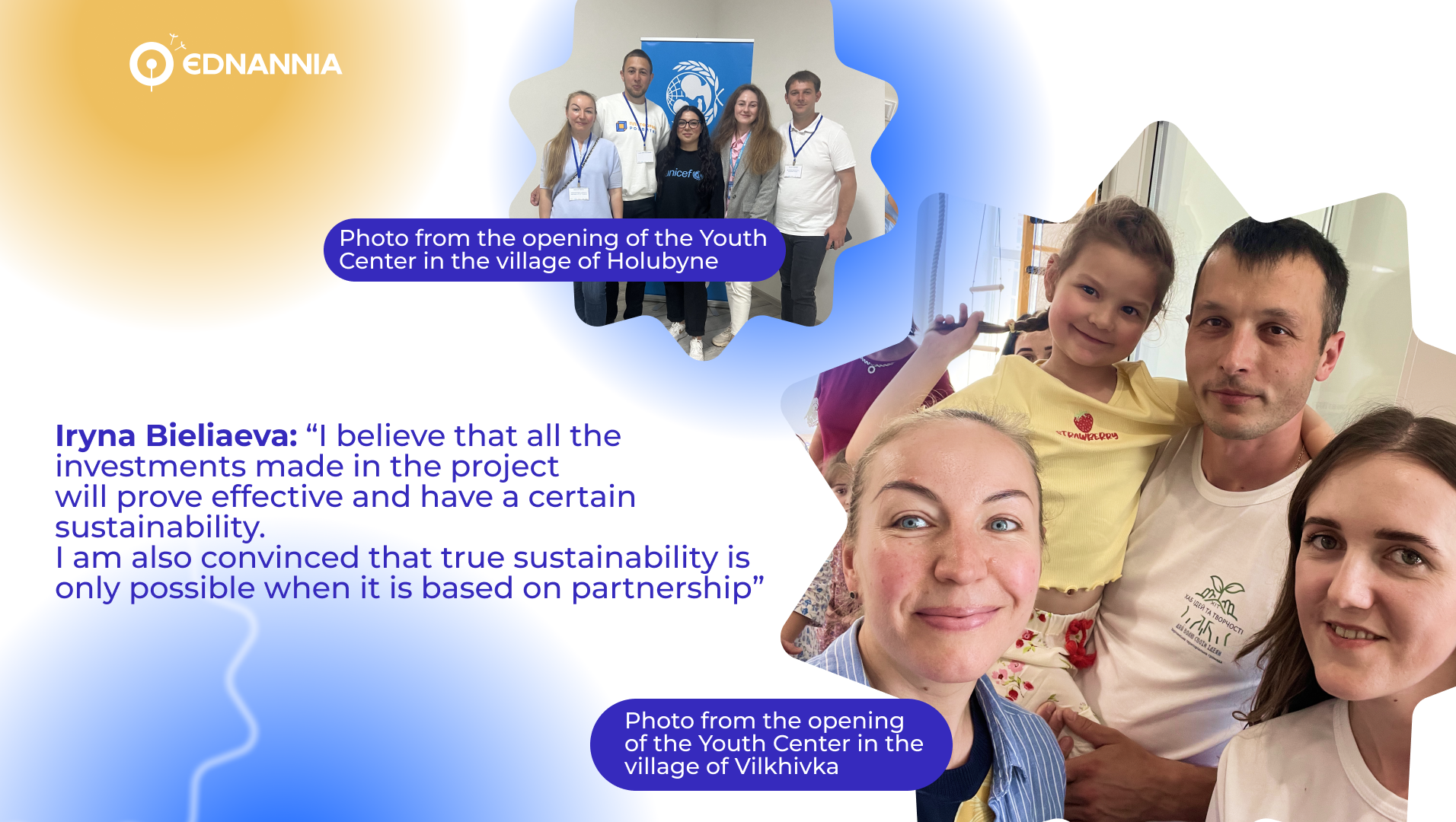
– During implementation, youth centers were established and upgraded, councils were supported, and efforts were made in entrepreneurship and education. Which of these components do you consider the most effective in terms of long-term impact?
– We’ll likely see the long-term impact in a few years — it’s still too early to make conclusions. I believe that all the investments made in the project will prove effective and have a certain level of sustainability. I am also convinced that true sustainability is only possible when it’s based on partnership.
I would not single out any direction as being more impactful than the others. I would say that sustainability will come from those who build strong, effective partnerships.
Take the youth centers, for example. We created them together with young people, in partnership with CSOs, but based in municipally owned buildings. As of 2025, all of our youth centers receive stable funding through local programs. The same applies to youth councils. They exist thanks to cooperation with local authorities. The implementation of UPSHIFT projects also relied on the support of local partners.
So, I believe we will be able to truly assess sustainability later on, but I deeply hope that at least the youth centers, which are all publicly owned, will continue their work well beyond 2025.
– More than 228,000 young people participated in the Program. How did you manage to achieve such wide outreach? What role did the partners play?
– Our partners played a crucial role, as they were the ones working directly on the ground. And I will say this: you cannot just sit and wait for young people to come to you, you have to go to them.
We had a specific approach: one of the key stages was promotion and outreach. Our implementing partners traveled to communities, presenting their work and actively looking for young people who might be interested and willing to take part.
The ‘sit back, wait, and post something on social media’ approach simply does not work. You have to go out, walk around, show up, and physically seek out the spaces where young people are, talk to them, and spread the word.
So, achieving such a high number of participants was not just about digital communication. We often assume that youth are on social media, and while that is partly true, they do not always see us there. But by showing up in person, we were able to connect, be seen, inspire interest, and bring them into the projects.
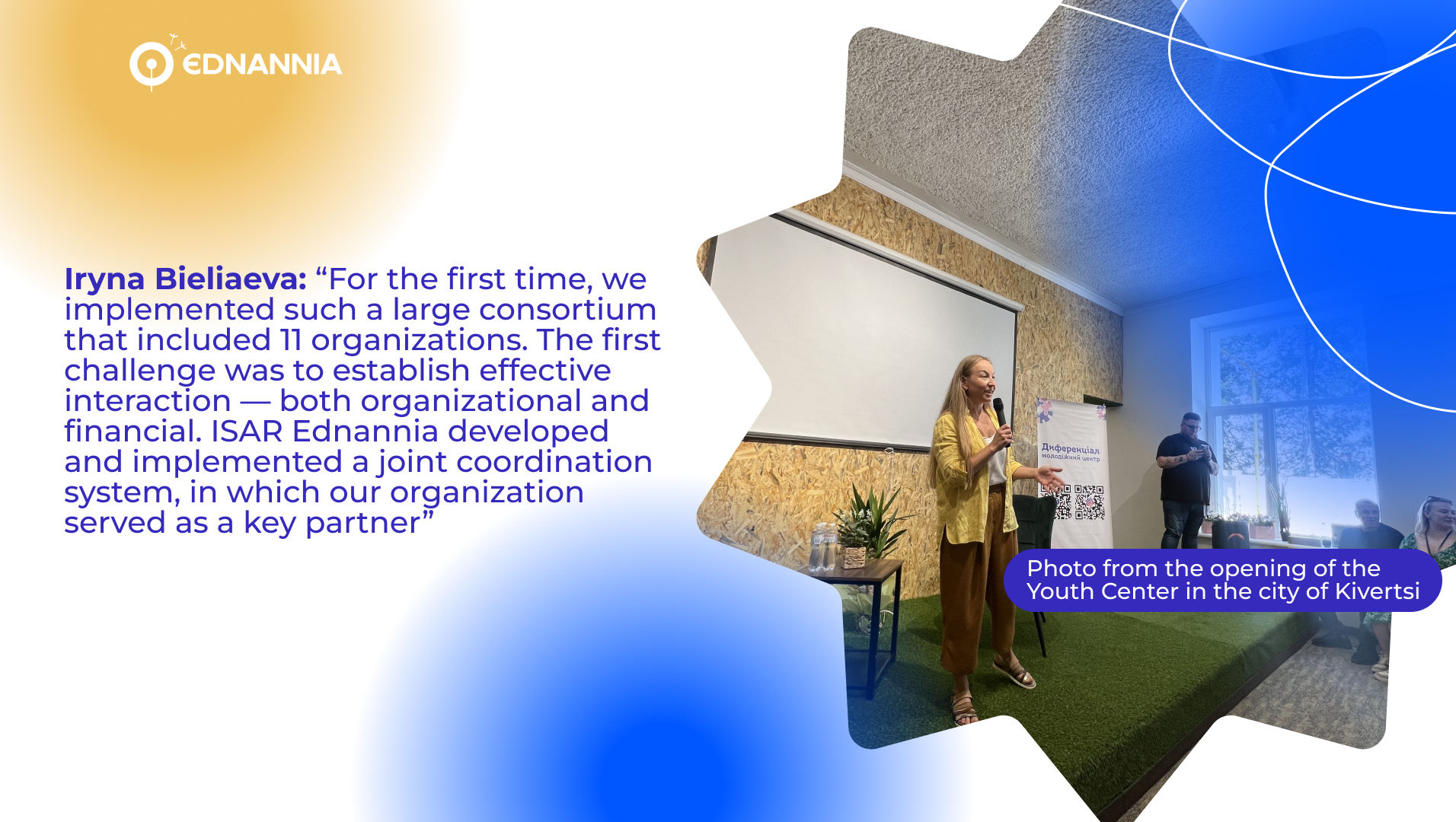
– What were the most difficult challenges during the Program’s implementation — logistical, administrative, or perhaps mental?
– There were many challenges. The first one: it’s hard to do something new. This program had a lot of new elements. It’s easy to do what is already been done, to follow a standard algorithm. For the first time, we implemented such a large consortium that included 11 organizations. The first challenge was establishing effective cooperation — both organizational and financial. ISAR Ednannia developed and implemented a joint coordination system in which our organization served as a key partner. It felt like we were all rowing in the same boat and completely interdependent.
The second challenge was probably how to motivate and spark interest. And I do not just mean among young people — it was also about how to engage local authorities and how to make the Program relevant and appealing to them.
These were the kinds of communication and coordination challenges we faced, but I believe we overcame them.
– The Program has ended. What is next? Do you see opportunities for continuation or scaling?
– We didn’t just implement the Program, meet the targets, and open youth centers. In every area we worked in — whether it was youth centers, youth councils, school-based social entrepreneurship, or UPSHIFT — we also created methodological recommendations and toolkits based on the Program's outcomes.
We put our experience down on paper: step-by-step instructions, coordination algorithms, and practical guidance on how we worked and how we suggest others work to achieve similar results.
All of these guides and manuals have been collected in ISAR Ednannia’s Analytical Library, and we encourage everyone to use them and share their experiences. I do not just believe, I’m deeply convinced that our experience will be valuable and will live on through the projects of other organizations that build on what we have done.
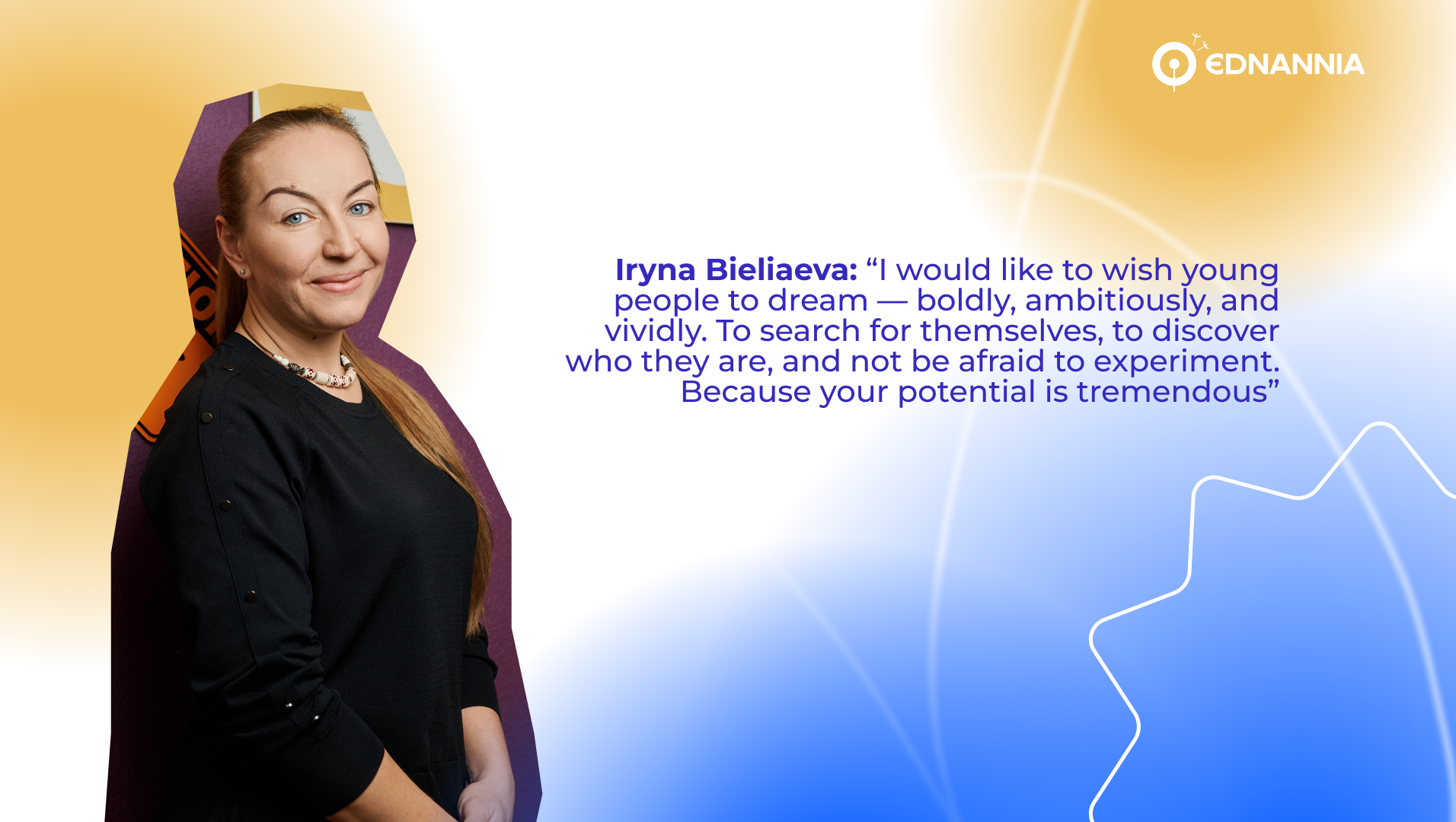
– How would you briefly describe the potential of the young people you worked with? And what would you like to say to them in the future?
– I would like to wish young people to dream — boldly, ambitiously, and vividly. To search for themselves, to discover, and not be afraid to experiment. Because your potential is tremendous.
The Youth Potential Development in Western Regions of Ukraine Program is implemented by ISAR Ednannia in partnership with implementation partners, with financial support from UNICEF, the Governments of Japan and the Kingdom of Norway, and the German Federal Ministry for Economic Cooperation and Development (BMZ) through the KfW Development Bank.
